Nokia Lumia 800 Review - Nokia's Brave New Foray into WP7
by Brian Klug on January 4, 2012 7:00 AM EST- Posted in
- Smartphones
- Nokia
- windows phone 7
- Mobile
- WP7
- Lumia
- Lumia 800
I think it’s important to start out with battery life for two reasons - I end up spending a huge majority of my time doing battery life tests, and in the case of the Lumia 800 much has been written about battery-related issues. The full disclosure is that the Lumia 800 unfortunately does have some rather glaring power and charging related problems. The first Lumia 800 we were sampled suffered from a battery-related problem that caused spontaneous rebooting during use and some charging issues. This was swapped out for another that had the updated release version firmware on it. This second device is the one I spent my majority of time with, although this second device also periodically reboots, though not as much.
The second issue is one that becomes visible when you fully discharge the phone, which naturally we do a lot of while testing battery. If you discharge the phone completely, and then attempt to re-charge, occasionally the phone will go into an endless boot loop, where it powers on, starts WP7, detects that the battery is below its power-off threshold, and shut down. Then the cycle repeats. Ordinarily this isn’t a big deal, but for some reason the PMIC (Qualcomm's PM8058) doesn’t really charge the phone while this is going on. I encountered this once, and even after 3 days of charging couldn’t boot successfully until I did a hard reset with the Nokia triple finger salute. The other minor issue is that if you get the phone into this low power state, sometimes it won’t pull any current to charge the phone. It takes a few attempts and getting the phone into the right pre-boot environment for this to work properly.
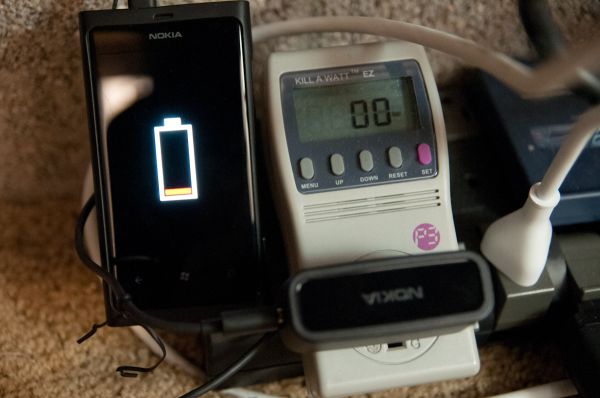 Plugged in but not drawing any current - Unplugging and replugging eventually gets the Lumia 800 to charge correctly and draw 5-6W.
Plugged in but not drawing any current - Unplugging and replugging eventually gets the Lumia 800 to charge correctly and draw 5-6W.
The latest update for the Lumia 800 as of this writing is 1600.2479.7740.11451 and includes “charging improvements” in its change-log, so it’s possible this issue has been addressed already, though there’s another update coming down the line as well. The Lumia 800 we were sampled only was being pushed “1600.2475.7720.11414” due to Microsoft’s staggered update push progress, so again it’s possible this is totally fixed.
There’s a debug menu which can be launched with the dialer code ##634#, and afterwards appears in the normal application list as well. In here you can see the real battery status, charge capacity, and even the instantaneous current draw no doubt as reported by the PMIC. While I wasn’t affected with the bug that sends the charge capacities to 0 mAh, this is still a useful menu.
So the normal corners of our battery life testing are how long the phone lasts while loading pages over 3G and WiFi, and then call time. Page load tests take place with the display set at 200 nits, though on WP7 the only display options are Low, Medium, and High (we selected Medium). We’ve added hotspot tests too which eliminate the display from being a factor, though these aren’t presently able to be tested on WP7.
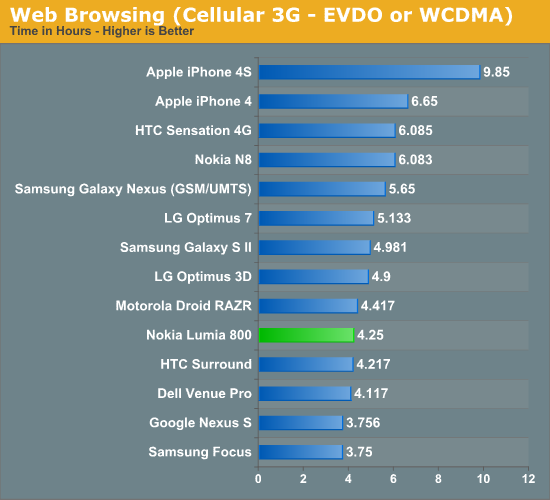
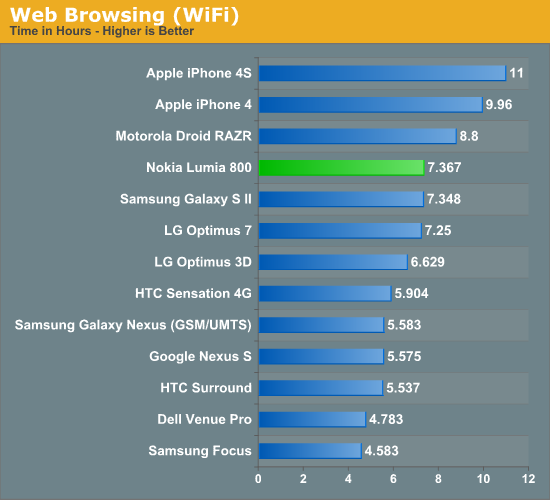
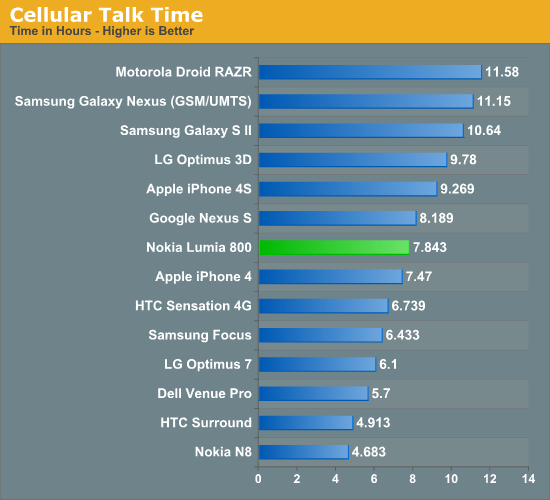
The Lumia leads the pack of WP7 devices we’ve tested in two out of the three categories, but lags the LG Optimus 7 when it comes to loading pages on cellular data. I’m decently impressed with how well the Lumia does considering its 1450mAh (5.37 Whr) battery, yet it could be better. Having an AMOLED display in conjunction with our primarily white background webpages from the page loading suite definitely makes an impact. I can’t help but wonder whether these numbers will improve or not after Nokia also updates firmware and fixes some of the battery life bugs have been publicly acknowledged.
I noticed some other subtle behavior while testing the Lumia 800. A new feature in WP7.5 “mango” is the addition of a battery saver tab under settings which optionally allows automatic pausing of background data and dimming of the display when battery gets low. In this menu you can also view battery percentage and some estimates of battery life remaining based on historical use. With the second updated Lumia 800, the phone turns off at 5%, presumably to mitigate the reboot loop that sometimes results if the phone is discharged to 0%. So there’s at least an extra 5% of battery life hanging around that no doubt will be exposed with the eventual update.


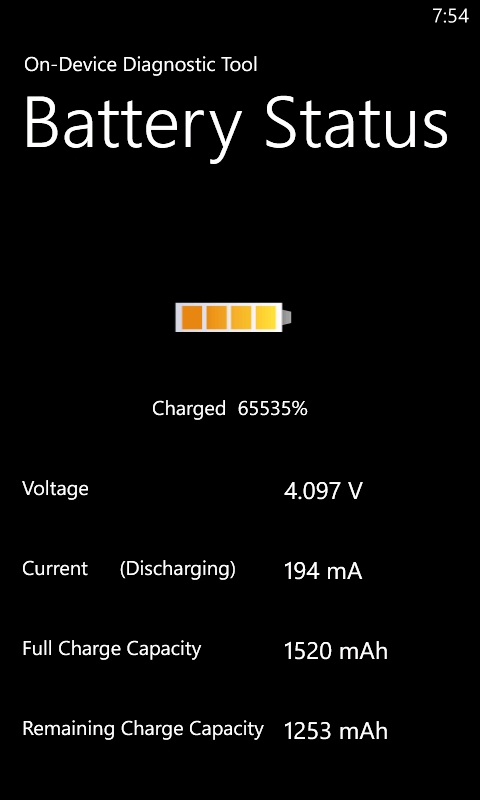
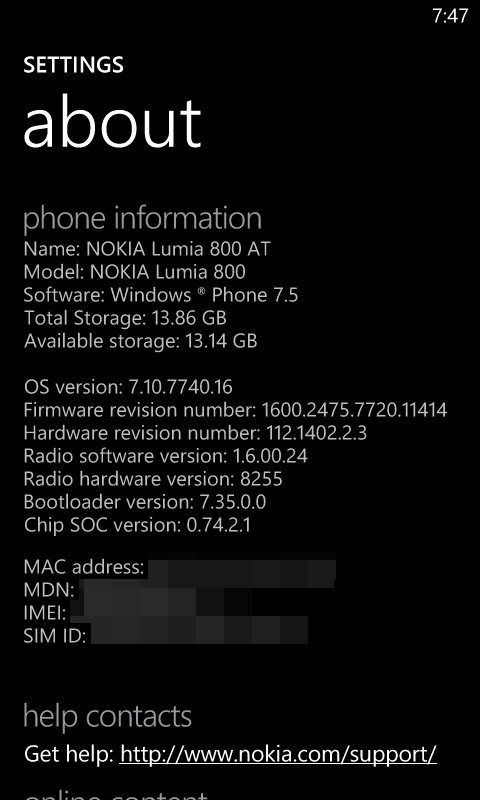
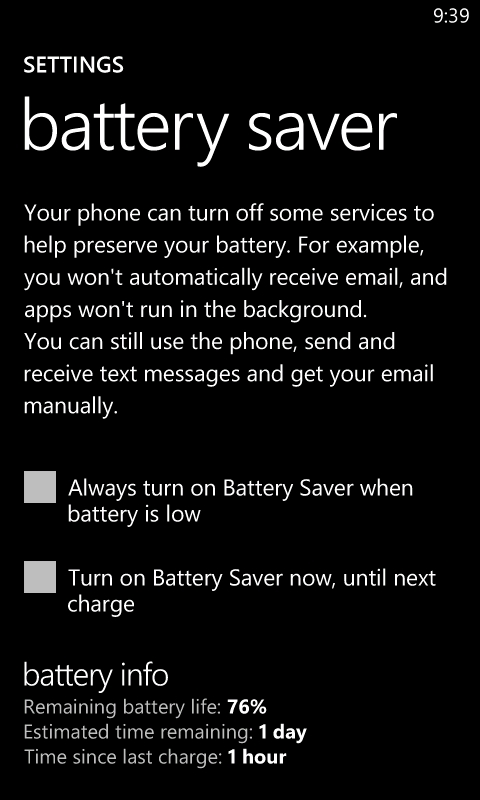








120 Comments
View All Comments
doubledeej - Thursday, January 5, 2012 - link
But Android customer satisfaction is horrible. Consumers might think they want it, but they change their mind after they've used it.WP7 has the highest customer satisfaction right now.
crispbp04 - Thursday, January 5, 2012 - link
You're too stupid to see the context of my comment, albeit I should have put a semi-colon instead of a period after "the minority of consumers want android". Read the next sentence. Dipshit. Only technogeek nerds WANT Android.Nataku - Thursday, January 5, 2012 - link
its ok, let the fanboys struggle with that os, my sis switched to lumia 800 because she's fed up with the two android phone she hadnote on consumer (that aren't geeks like us) purchases, they either listen to a friend or get pushed around by the sale people, the rest is marketting (eg. iphone) so no such thing as "every one wants android" crap...
solipsism - Wednesday, January 4, 2012 - link
So your idea of saving Nokia is to make every Nokia phone run Android so it has to compete with every other OEM using Android and has an ecosystem that appeals to only cheap, profitless devices or geeks, instead of going after the profitable markets by creating a quality and unique experience Nokia can control.WP7 is their best chance for survival. It's late to the game but WP7 is a brilliant OS, the second best mobile OS and development platform on the market today after iOS/Xcode.
As David Pogue said, It's only downfall is that "it's not popular because it's not popular." Another year could change all that and both Nokia and MS have the money and talent to hold on for many years looking for their opportunity.
Death666Angel - Wednesday, January 4, 2012 - link
Seems to me that most WP7 phones ship for a lot less money than Android hardware does. So I don't know why the margins would be so small. As fas as I know, WP7 also costs licensing whereas Android is free (in theory, MS still gets money for it from some manufacturers).Use whatever floats your boat, but don't think any one of them is superior in their own right. They are not.
davepermen - Wednesday, January 11, 2012 - link
If this would have been what consumers wanted, why was nokia going down so hard?Exactly
He saves their asses right now. Those N9 fans are loud on internet geek forums and discussions. They are not enough to make them survive, though.
WP7 is a very geeky os, one that you could love if you moved beyond "omg they changed their plans to survive they're SO uncool".
and i'm glad they did NOT went the android route. if you want android, there are already enough options. They need to have something that differenciates them from the masses, without the actual investement into building something on their own that is different.
465thGTG - Wednesday, January 4, 2012 - link
Hmm... as a long time iOS and Android user I find WP7 very fun and interesting. To each his own I guess.davepermen - Wednesday, January 11, 2012 - link
WP7 is an interesting os by itself, too. And yes, alive, unlike the N9.abhicherath - Wednesday, January 4, 2012 - link
this is really,really pretty....The N9 was rather prettier though.BTW could anybody tell me why exactly did elop ditch meego.It was functional,zippy and i would take it over mango given the choice...the only thing it lacked was a good ecosystem,ah well..
R.I.P MeeGo.
465thGTG - Wednesday, January 4, 2012 - link
Turns out ecosystems aren't easy to come by.